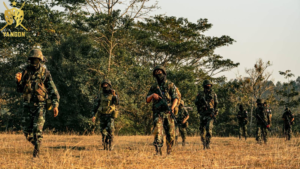Myanmar Spring Chronicle – October 30
(MoeMaKa) October 31, 2024
The Strategic Implications of China’s Involvement with Myanmar’s Anti-Junta Forces
News of junta leader Min Aung Hlaing’s planned attendance at an upcoming Mekong countries summit in China on November 7-9 has heightened awareness of the increasing closeness between China’s government and the Myanmar military junta. This diplomatic engagement reflects a deeper alignment that may extend beyond mere acknowledgment and could hold significant strategic implications.
Since seizing power over three and a half years ago, the junta has sparingly engaged in international diplomacy, with the junta leader visiting an ASEAN special summit in Indonesia once and training in military tactics in Russia once. However, his visit to China is rare and crucial given China’s influence on Myanmar’s current internal crises, suggesting that this trip holds strategic weight beyond regular diplomacy.
This development comes roughly three months after the Chinese Foreign Minister visited Naypyidaw in August, marking a notable shift in China’s policy towards Myanmar. Following this visit, China began exerting economic pressure by closing border crossings and limiting the export of essential supplies, including food, fuel, and electricity, to ethnic armed regions of Myanmar. The Chinese government is concerned about potential damage to its interests if the Myanmar army were to lose control of territory to ethnic armed groups and resistance forces allied with the National Unity Government (NUG).
China’s pressure extended to urging northern Myanmar ethnic armed groups, such as the Kachin Independence Army (KIA), Ta’ang National Liberation Army (TNLA), and Myanmar National Democratic Alliance Army (MNDAA), to avoid close ties with resistance forces. This shift in policy aligns with China’s pragmatic approach, prioritizing economic stability and the cessation of conflict over strict political norms or condemnation of the junta’s war crimes.
Historically, northern ethnic armed groups have relied on Chinese imports to bypass military blockades, demonstrating how dependent these groups are on cross-border trade with China. Notably, the KIA, MNDAA, and others have maintained logistical support from China, especially during military operations such as Operation 1027. This shift indicates China’s interest in maintaining control over criminal activities, like online scams, in regions close to its borders.
The NUG has also declared its stance towards China, asserting in January of this year its support for the One China Policy, recognizing China as a vital economic partner and pledging to curb cross-border crimes in cooperation with regional partners. The NUG’s overall China policy aligns with practical considerations but is challenged by China’s perception of the NUG as a U.S.-aligned political entity, prompting China to pressure neighboring ethnic armed groups to distance themselves from the NUG.
Given the current diplomatic dynamics, it may be time for the NUG to reevaluate its strategy toward China. Whether this involves addressing perceived vulnerabilities in its China policy or offering clearer assurances to alleviate China’s concerns, the NUG’s approach must consider China’s influence on regional ethnic armed groups and balance diplomatic efforts with broader resistance goals.

